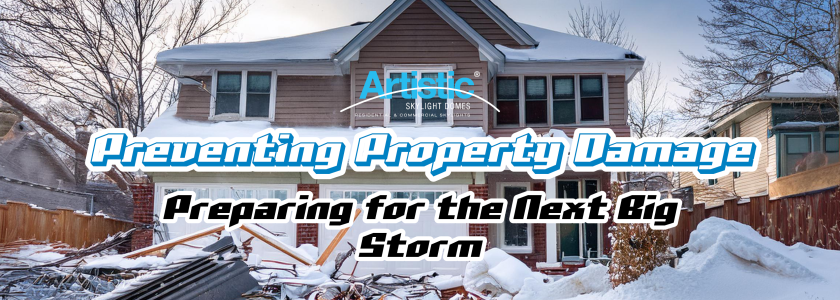
After back-to-back hurricanes devastated southern Florida this fall, the U.S. Army Corps of Engineers activated Operation Blue Roof, a stopgap program helping homeowners awaiting repairs from property damage.
Operation Blue Roof provides free “fiber-reinforced, industrial-strength sheeting to protect storm-damaged roofs,” and is currently available to homeowners across 22 counties while they make arrangements for permanent repairs.
It’s just one of many response programs deployed to assist with housing and infrastructure restoration and cleanup in the wake of hurricanes Milton and Helene – even Canadians have stepped in to help fix power grids.
With the frequency of extreme weather events on the rise, some cities have begun implementing resiliency projects in an effort to prevent severe levels of property damage.
Preventing property damage, or even loss, doesn’t have to start at the municipal level. On the chance that you find yourself facing the next big hurricane, tornado or blizzard, here are some tips to help you – and your property – weather the storm.
Know your enemy
Different geographies bring different weather challenges, so do some research to make sure your property can withstand the climate it exists in.
Make your home or commercial property a fortress against storm damage by eliminating existing vulnerabilities. Address external problems as you discover them to avoid mould and structural damage. If that isn’t possible, think about preparing a maintenance plan that keeps you on a regular inspection and repair schedule.
Maintenance from the top-down
There’s a reason the U.S. Army Corps of Engineers efforts have prioritized helping citizens protect their roofs – they are the first line of defence in inclement weather. Make sure the membrane is intact, no tiles or shingles are missing, and that any drainage pathways or gutters are cleared.
Have skylights? If so, avoid leakage by ensuring the units are fitted properly, secured tightly, and waterproofed. One way to tell if there are any issues is by looking for indications of condensation, leaks, or other wear and tear that weather may bring. And remember, if those skylights do need some attention, it’s safest to call a professional for assistance – preferably before the bad weather hits.
Get ready to go
It’s the last thing anyone wants, but with severe weather events, there may come a point when it just isn’t safe to stay. To avoid confusion if the moment comes, consider having a family plan for your home or a staff plan at the office so that everyone is on the same page and knows what to do.
If you learn that bad weather is on its way, prepare an emergency kit and top off your gas tank you so you can leave at a moment’s notice and still have food, water and other necessities.
And finally, let someone know your plan so in the case that you lose communication, you’ll know that they’ve got your back.
Property damage preparation is prevention
Property damage may be unavoidable when that next big storm hits, but there are many things you can do to avoid catastrophic property damage and keep you and your family safe.



